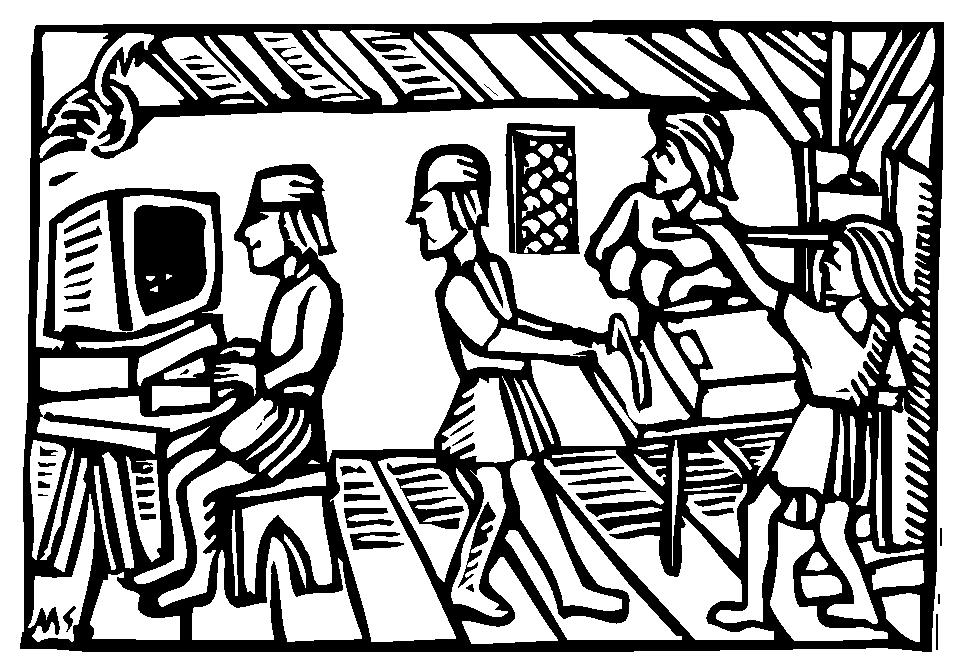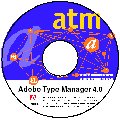
etc. etc.
- Defensive programming pays off when other peoples software has problems. With ten years of experience with fonts, PS rasterizers and ATM, we know what common programming errors appear again and again in other peoples software, so we are careful to program around these.
For a dramatic illustration consider the current fiasco with Acrobat 5 Reader and PDF files made using free software and competing TeX systems
- Achieve quality font rendering with commercial-grade, fully hintedATM-compatible fonts in TrueType Adobe Type 1 format (a.k.a. `PostScript' fonts or `ATM' fonts).
For a dramatic illustration of the difference in quality between our Type 1 fonts and competitive TrueType fonts click here. Y&Y was involved in the conversion and hinting of most of the quality fonts now available in Type 1 format for use with TeX, including CM, AMS, extra LaTeX + SliTeX, Lucida Bright, Lucida New Math, Lucida Bright Expert, MathTime 1.1 and MathTime Plus.
- Access all characters in your fonts with DVIWindo, the Windows DVI file previewer
On-the-fly reencoding makes unencoded glyphs accessible in non-CM fonts and allows arbitrary character layout. No other previewer using ATM for font rendering (on any platform) has this capability! (i.e. they are unable to access all 228 of the "standard" glyphs in text fonts - or extra ff-ligatures if present). See Windows missing for the 15 glyphs missing in Windows ANSI (including fi, fl, dotlessi, dotaccent, ring, etc.), and Mac missing for the 21 glyphs missing on the Macintosh (including ff-ligatures, Icelandic and Polish letters, etc.)
- Print fast to PostScript devices with DVIPSONE, the special PostScript printer driver
Partial font downloading can reduce PostScript file size by a factor of four to eight on short jobs! This greatly speeds printing and reduces the chance of running out of printer memory (especially with TeX, which likes to use lots of fonts).
- Handle arbitrarily complicated jobs, thanks to Y&Y TeX's Dynamic Memory Allocation
A dynamic TeX won't run into hard coded limitations. Y&Y TeX automatically grows main memory (both directions), string space, font space, the input buffer, as well as all stacks (parameter, semantic nest, save and input stacks) as needed --- it's the only IBM PC implementation with this capability (others are either static allocations or have just command line control). The only other TeX implementation with proper dynamic memory allocation is Textures from Blue Sky TeX Systems for the Macintosh.
- ATM 4.0 for Windows
Adobe Type Manager provides superb rendering on screen (and for non-PostScript printers), provided the glyph programs in the fonts contain properly tuned "hints" and "hint replacements." 
(NOTE: Windows 2000 and Windows XP have built in Type 1 font support ).
- Use literally dozens of other power features not found elsewhere, including:
- transfer of typeset material on clipboard (and its not a bitmap);
- fully page-independent, resolution-independent PS output;
- PS output ready for page imposition, color separation and direct-to-plate work;
- inclusion of fonts called for by EPS files via %%IncludeFont:...;
- hypertext capability to jump to named destinations, launch applications, etc.;
- automatic translation of hypertext links to Acrobat 'pdfmarks';
- support for Multiple Master (MM) fonts (create your own font instances);
- auto activation of fonts when using ATM 4.0 Deluxe in Windows 95/98/SE/Me;
- reencode even TrueType fonts in Windows NT/2000 Pro/XP to make f-ligatures accessible;
- TeX metric files (TFM) for new fonts constructed directly from the previewer;
- switch text font encoding selection directly from a menu in the previewer;
- color coding of fonts (handy for debugging font selection macros);
- support of device independent TPIC \specials for simple graphics;
- support for XY-Pic graphics package including XY Pic fonts;
- support for PS Tricks graphics when working with PS output devices;
- extensive support for "foreign" keyboards (including input translation);
- features to enable hyphenation in languages that use accented or special characters;
- WMF graphics insertion (in addition to EPS and TIFF, of course);
- on-screen previews of EPS files that have TIFF, WMF, or EPSI headers;
- support for the hyperref and backref packages;
- rotation and scaling even on screen when using Windows NT/2000 Pro/XP;
- hyphenation pattern memory for as many languages as you want;
- hyphenation exception memory to store word list for a whole book;
- fully user customizable "TeX Menu" to call any application;
- full featured Windows editor included;
- ability to link to any editor or spell checker;
- text search in DVI file (even text with f-ligatures);
- compression of TIFF images in PS output for PS level II devices;
- path cache speeds directory search in LaTeX 2e (which opens all files twice);